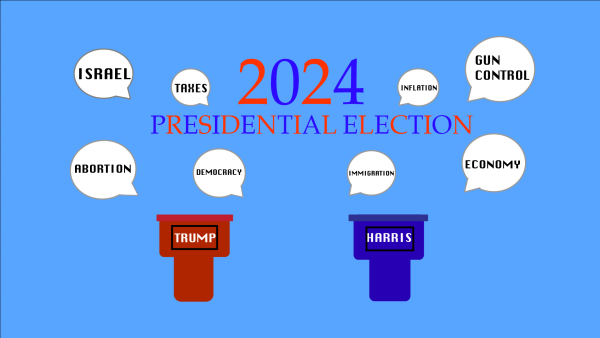HIRSCHONOMICS: All about that Bitcoin bubble
December 25, 2017
By Sam Hirschhorn and Zack Hirschhorn, Staff Columnists
Bitcoin, which has been in the news a lot lately, is a digital currency (crypto-currency) created in 2009. It has seen a ridiculously rapid rise in value, and then last week it started to fall. What’s going on?
Although there are other types of crypto-currency, Bitcoin is the most popular. There is no central authority that governs or creates Bitcoin, instead Bitcoins are “mined” from the internet using computing power and transactions are done through a new technology called blockchain. So why would people use Bitcoin?
There are three main reasons. The first is that it is used for criminal activity. Bitcoin is anonymous and very difficult to track, so criminals use it to avoid getting caught. A second group of users are core supporters: people who believe in the concept of crypto-currency that is detached from any government.
The third group is the largest, and driven to buy by something we have not mentioned yet: a single Bitcoin is worth around $14,000 — and was worth around $800 back in January. In a single year, Bitcoin’s value has increased by over 1,000 percent.
This group of buyers is comprised of speculators, those who buy Bitcoin as they would any other investment: because they think its value will rise.
Behavior like this, where everyone is buying something simply because they think the value will increase, can lead to a what economists call a bubble.
A bubble occurs when the market value of an asset is significantly higher than its actual value. This normally occurs when people start buying the asset because they assume the price will go up, not because they want, need or value it. The increased demand increases the market value, which in turn causes more people to invest because they see the rising price and think the price will go higher. But this process will lead to a market value that is much too high for what the investment is actually worth.
Once the price reaches a certain point, people will want to sell the asset and walk away with a tidy profit. When enough people reach this conclusion — and the price starts to plateau because of the increased selling — the bubble begins to burst. Now that the price has stopped increasing, there is little demand, because people were only buying because they thought the price would go up. This increased supply and low demand lead to the price dropping, at which point everyone wants to sell — so they can make the most possible money before the price drops too far — and the value then drops extremely quickly. When that happens, it’s said that the bubble has burst.
There are a couple of main signs of a bubble. The first is a rapid increase in market value that is not coupled with a positive change in the real value of the asset. The market value of a single bitcoin as of Dec. 22 wa s $14,583.56. Three months ago it was $4,626. One year ago it was $758 dollars for a bitcoin. This means the market value has risen by more than 100 percent in just three months — and increased 1000 percent over the last year.
That is an insane rise in a short period of time. For contrast, the Dow, hitting record highs, has risen by just 25 percent in the last year.
Now this shocking rise isn’t necessarily indicative of a bubble — though even alone it’s a good indicator. The second part is that bitcoins’ underlying value has not changed so much over the past year — and has definitely not increased by 1000 percent.
Bitcoin’s base technology is the same over the past year. Most large corporations still do not accept bitcoin, and it is still not a significantly accepted currency is the U.S. or abroad. In fact, its value as a currency — which would be its underlying value — has not changed significantly over the past year or month. Only its market value has risen. This disconnect is a main sign of a bubble.
Another sign of a bubble is when investors buy based on speculation rather than value; in fact, this is what normally starts a bubble. In bitcoins’ case, most buyers are speculators. They do not use the currency themselves, or believe in its inherent value — they just believe the price will go up so they can sell it to someone else — who is also most likely going to buy it as speculation.
In fact, it is possible that the bubble is popping as you are reading this. Bitcoin has fallen 25% from it’s high of $19,000 in the past week. This drop may be the start of the bubble popping, or may simply be volatility before the real drop occurs later on.
But either way, unless there is a major change to the fundamental value of bitcoins soon, we would advise everyone to stay away from Bitcoin. Eventually it will, like all bubbles, pop — and leave all of it’s investors with virtually worthless bits.














